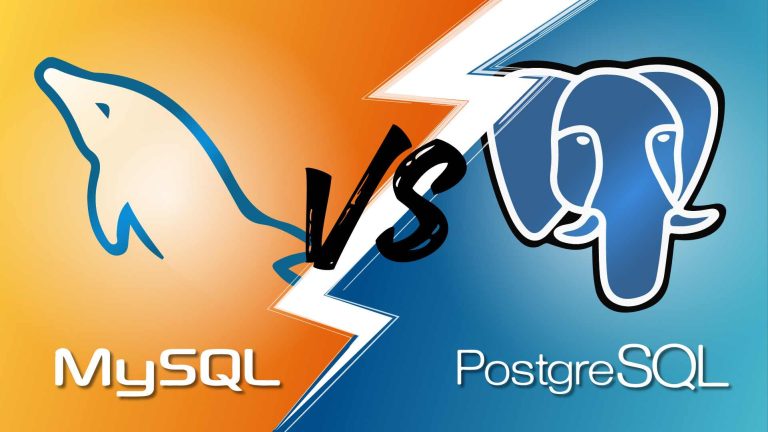In the realm of relational database management systems (RDBMS), MySQL and PostgreSQL have long been dominant players, each with its own strengths and weaknesses. As we enter 2024, businesses and developers continue to face the perennial question: which database system is better suited for their needs? Let’s delve into the comparison between MySQL and PostgreSQL to shed light on their current standings in the ever-evolving landscape of data management.
Frequently Asked Questions: PostgreSQL vs MySQL
➱ What are the main distinctions between PostgreSQL and MySQL?
PostgreSQL stands out with a broader array of built-in data types, adherence to high SQL standards, extensive feature set, flexible data types, scalability, concurrency, and robust data integrity compared to MySQL. Conversely, MySQL offers a more limited set of data types but includes spatial extensions tailored for geographic information system (GIS) data.
➱ What insights can be drawn from the Stack Overflow Survey of 2022 and 2023?
In 2023, PostgreSQL surpassed MySQL in popularity among professional developers, establishing itself as the preferred choice. While PostgreSQL dominates among professional developers, MySQL still retains popularity among those in the learning phase.
➱ What are the advantages of using MySQL over PostgreSQL?
MySQL’s popularity and availability of commercial support are often cited as advantages over PostgreSQL. Additionally, MySQL is perceived as easier to learn and benefits from a larger user base.
➱ What are the advantages of using PostgreSQL over MySQL?
PostgreSQL boasts a richer feature set, stronger adherence to SQL standards, a thriving community, and ecosystem. It also demonstrates superior performance in benchmarks, with enhanced support for complex transactions and queries.
➱ Which database is preferable for handling large data sets?
Generally, PostgreSQL is considered superior for managing large data sets due to its robust scalability, advanced indexing techniques, and optimized query processing. However, MySQL is also adept at handling large data sets, particularly in scenarios characterized by predominantly read-heavy workloads.
➱ Which is the better option, PostgreSQL or MySQL?
The choice between PostgreSQL and MySQL hinges on your specific requirements and use case. PostgreSQL shines in scenarios necessitating data integrity, advanced features, and scalability, while MySQL is favored for its simplicity and efficacy in read-heavy workloads.
➱ Is PostgreSQL easier to use than MySQL?
The ease of use between PostgreSQL and MySQL is subjective and contingent on your familiarity with SQL and relational database management systems (RDBMS). Some users may find MySQL more user-friendly due to its straightforward design, whereas others may appreciate PostgreSQL’s strict adherence to SQL standards. Both databases benefit from strong community support to aid in the learning process.
➱ Should I learn PostgreSQL or MySQL?
The decision to learn PostgreSQL or MySQL depends on your specific requirements. MySQL is a suitable choice for simplicity, whereas PostgreSQL is ideal if you require advanced features, data integrity, and scalability. Given their widespread usage, your decision should align with the demands of your projects.
➱ What are the expectations for PostgreSQL and MySQL in 2024?
PostgreSQL is anticipated to prioritize enhancements in sharding, logical replication, performance, and other features. Meanwhile, MySQL is expected to focus on further improving high availability, security, performance, and may continue to evolve its support for analytics, machine learning, and high-performance data processing.
Projected Expectations for PostgreSQL in 2024:
- Enhanced Sharding: PostgreSQL is projected to advance its sharding capabilities, streamlining the implementation and management of sharding setups.
- Logical Replication: The focus is expected to persist on broadening logical replication functionalities, empowering users to architect their database workloads with greater flexibility.
- Performance Enhancements: Postgres’ performance is slated for further augmentation through the optimization of CPU acceleration via SIMD (Single Instruction, Multiple Data) and enhancements in bulk loading.
- Direct I/O Support: PostgreSQL might explore the integration of direct I/O support to circumvent the operating system, potentially leading to substantial speed enhancements.
Projected Anticipations for MySQL in 2024:
- High Availability and Security: Development endeavors are projected to prioritize bolstering high availability, security, and performance to cater to the evolving needs of modern applications.
- Performance Optimization: MySQL is anticipated to introduce features aimed at optimizing performance for specific use cases and enhancements tailored for managing dynamic workloads.
- Support for Analytics and Machine Learning: Expectations include the continuous evolution of support for analytics, machine learning, and high-performance data processing capabilities.
- Innovation and LTS Releases: MySQL’s versioning model is expected to transition towards Innovation and Long-Term Support (LTS) releases, granting access to the latest features and enhancements.
In 2024, the choice between MySQL and PostgreSQL continues to hinge on factors such as performance requirements, feature preferences, data integrity considerations, and community support. While MySQL maintains its position as a reliable and high-performance RDBMS with widespread adoption, PostgreSQL has emerged as a formidable contender, offering a rich feature set, strict adherence to standards, and robust data integrity mechanisms. Ultimately, the decision between MySQL and PostgreSQL should be based on a thorough evaluation of specific use cases, scalability needs, and long-term strategic considerations. Whether opting for the simplicity and performance of MySQL or the versatility and robustness of PostgreSQL, businesses and developers have access to two formidable database management systems capable of powering a wide range of applications in the dynamic landscape of modern data management.
Fill-in the form below to reach out to us with your project👇




